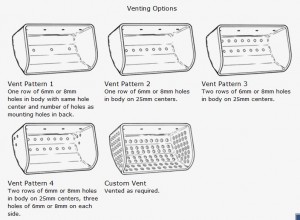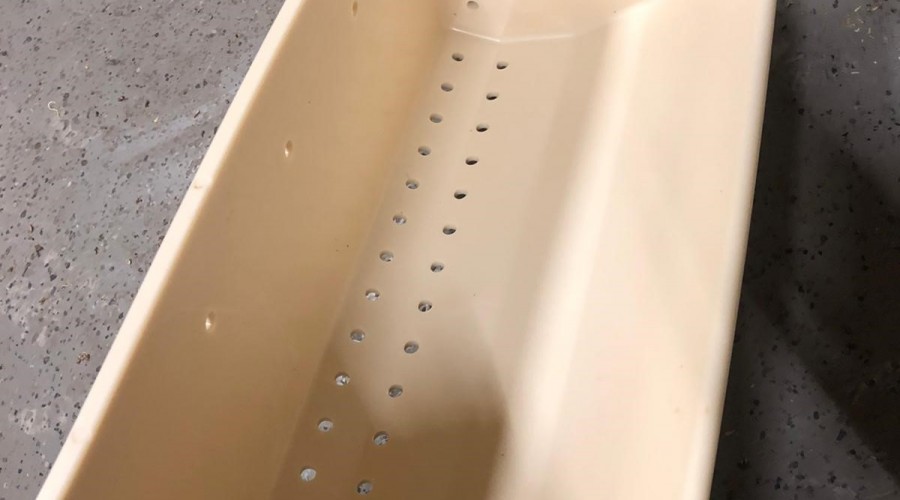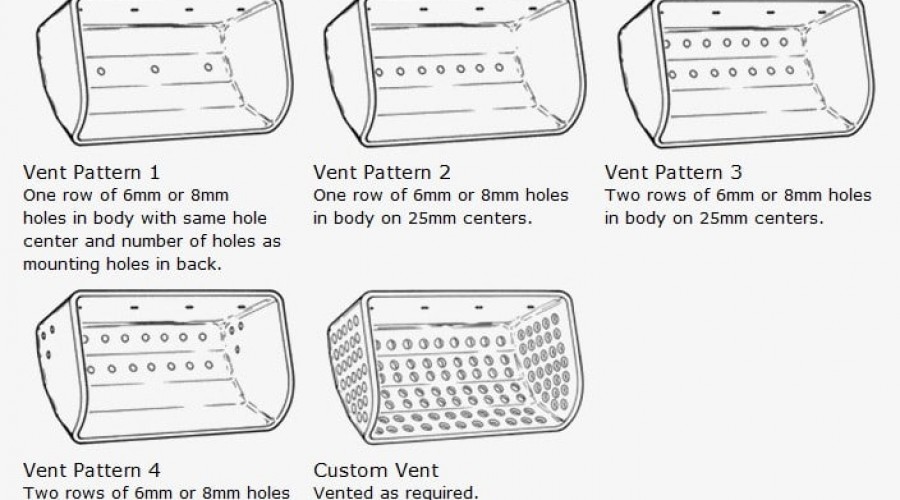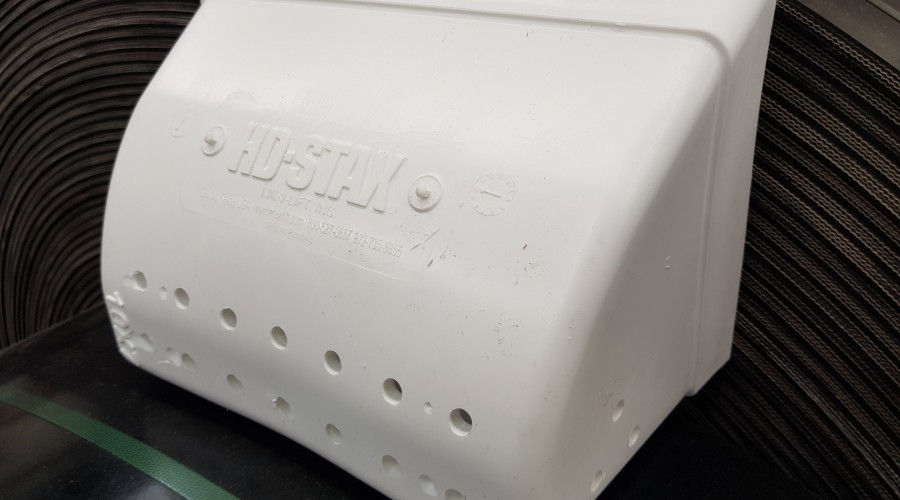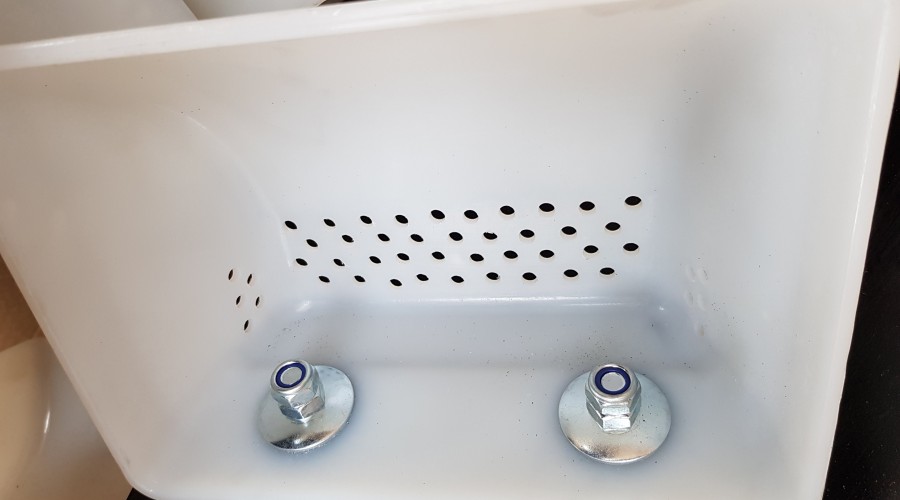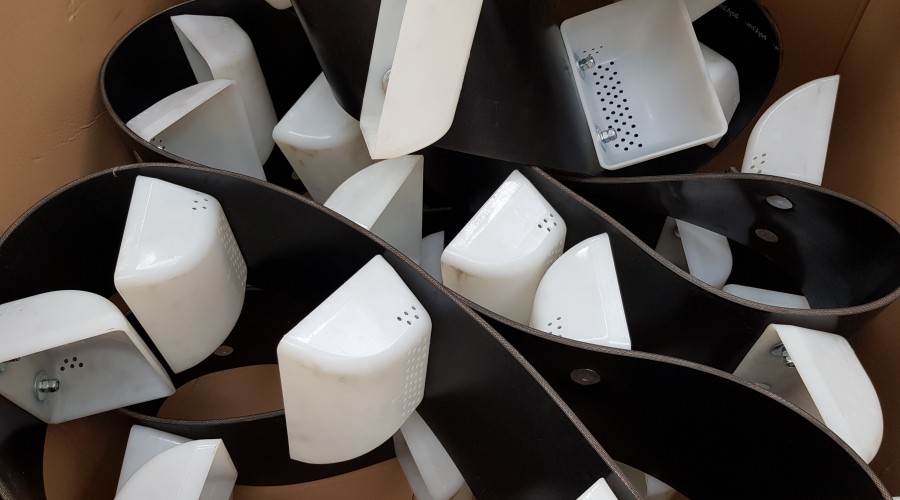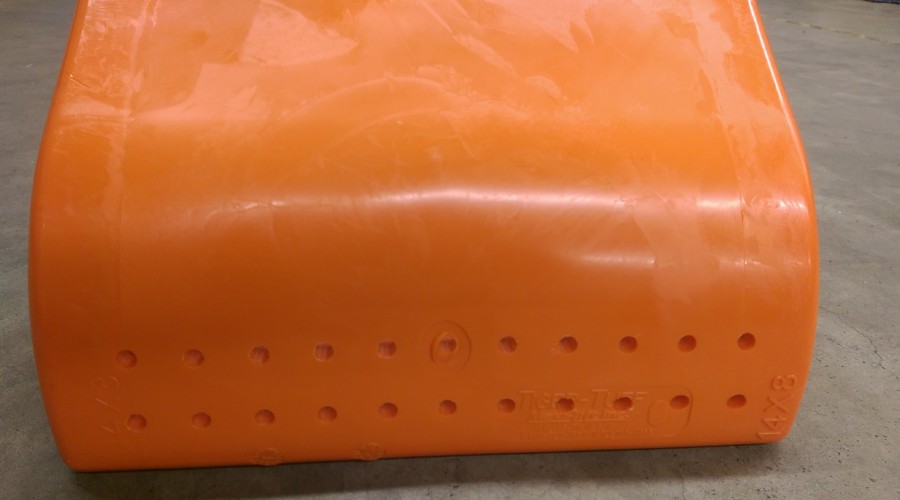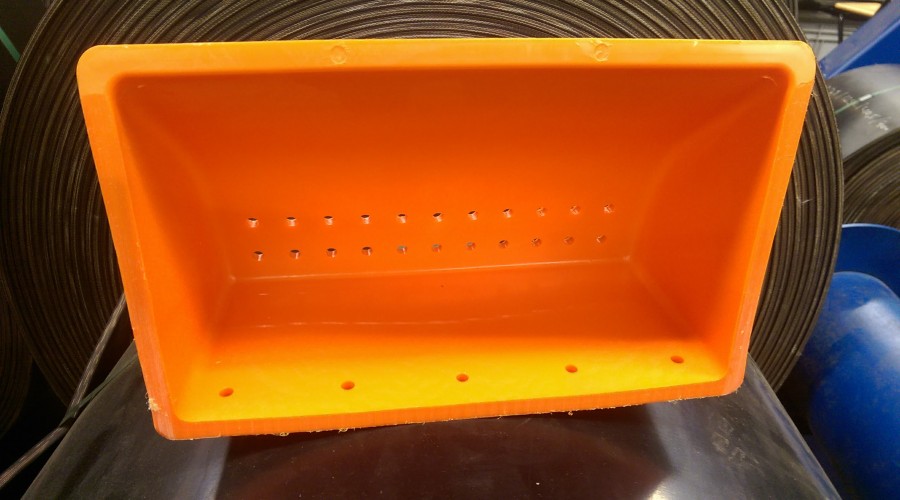Venting an elevator bucket aids in bucket fill and discharge with light, fluffy materials. Lightweight, fluffy materials, and those that are extremely dense or flow poorly can be difficult to handle in bucket elevators at high speeds. Because these materials tend to trap air when being handled by an elevator bucket, it is necessary to provide air relief to assist in their filling and discharge. Materials in this category might be various flours, meals, feed mash or screenings. As these materials enter the bucket, air is released through a series of vent holes in the bottom of the bucket allowing for a more complete fill. These vent holes also allow air to re-enter the bucket, which facilitates full release of product into the discharge. Standard hole diameter is equal to the size of the bolt mounting holes. Anything different is considered a custom vent.
A venting bucket can improve the efficiency of some bucket elevators when handling certain products. On dense materials such as lour, meals, and mash feeds, the vents allow air to escape through the cup as it fills, which permits the cup to fill more completely. During discharge, air can return through the cups as it empties, thus preventing a vacuum that could hold some of the products in the cup and cause back-legging.
On extremely light materials such as alfalfa meal, screenings and bran, a vented bucket not only minimizes blowing of the product during loading and discharge, but also reduces air turbulence in the leg as the bucket travels empty down the return side of the elevator. A reduction in air currents minimizes the vacuum which can draw a light product through the down leg and back to the boot.
We have four standard patterns available which offer varying amounts of air release for the handling of most products. Custom venting is available upon request.
